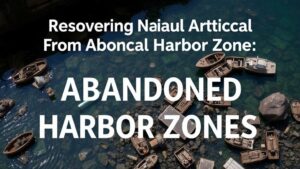Deciphering Treasure Clues Based on Geographic Anomalies
Deciphering Treasure Clues Based on Geographic Anomalies
The allure of hidden treasure has captivated cultures throughout history, spawning tales of adventure and intrigue. One significant approach to uncovering buried riches is through the analysis of geographic anomalies–unusual landforms or features that can serve as clues. This article seeks to elucidate the methods and strategies for interpreting these geographic clues, backed by real-world examples and case studies.
Understanding Geographic Anomalies
Geographic anomalies refer to irregular land formations or patterns that deviate from the surrounding landscape. e variations can range from peculiar rock formations to unusually shaped water bodies and can provide essential hints about treasure locations. Notably, these anomalies may reveal historical uses of land and natural resources, leading treasure hunters to significant discoveries.
Types of Geographic Anomalies
Understanding the types of geographic anomalies is crucial for effective treasure hunting. The following categories are commonly analyzed:
- Geological formations: Canyons, cliffs, and rock outcroppings may serve as natural markers or landmark clues.
- Water bodies: Rivers, lakes, and ponds can indicate strategic hiding spots for treasure, often utilized due to accessibility and concealment.
- Vegetation patterns: Unusual concentrations of flora can signal buried structures or disturbance in the ground from past activities.
Analyzing Geological Formations
Geological formations can reveal significant information about potential treasure locations. For example, the famed Lost Dutchman Mine in Arizona has been associated with the Superstition Mountains, known for their unique topography. The combination of steep cliffs and canyons creates an ideal environment for concealing valuable resources. Geologists often study rock strata, erosion patterns, and mineral deposits in these locations to discern potential treasure troves.
Also, geological surveys can reveal fault lines or fractures in the earth, which may indicate where treasures were historically buried or hidden. For example, during the California Gold Rush, miners often used geological maps to identify areas of high mineral concentration, leading to substantial gold discoveries.
Interpreting Water Body Clues
Water bodies frequently serve as key indicators for treasure locations. Historical records often suggest that explorers and pirates hid their valuable cargo near water sources for reasons of convenience and concealment. A compelling case study is the wreck of the Spanish galleon Nuestra Señora de Atocha. After being lost off the coast of Florida in 1622, the treasure was eventually found using historical maps that highlighted the ships last known navigation routes near specific sea currents.
Also, submerged treasure may also be discovered by analyzing geological data indicating prior land erosion or changes in water levels. The use of sonar technology to scan underwater landscapes has revealed numerous lost shipwrecks, leading treasure hunters to significant finds.
Examining Vegetation Patterns
Vegetation can often obscure clues about hidden treasures. Changes in plant growth or unusual vegetation patterns can indicate underlying structures or disturbances. For example, the famous Oak Island mystery involves clues interpreted through the distinct patterns of trees and shrubs that are believed to mark treasure locations.
Botanists and archeologists sometimes collaborate to analyze ancient land use and the botanical remains to reconstruct historical landscapes that may lead to buried treasures. A study conducted on South Pacific islands revealed how indigenous people utilized specific tree types as indicators of fresh water and food resources, suggesting pathways to hidden valuables.
Real-World Applications and Case Studies
The application of geographic anomaly analysis in treasure hunting has yielded both novel and spectacular discoveries. For example, in 2015, researchers utilized satellite imaging combined with historical documentation to locate a lost 16th-century shipwreck off the coast of Nova Scotia. r analysis showed how unique underwater topographies had influenced ship routes and eventual losses.
In another case, the treasure of Captain Kidd, a notorious pirate, was famously sought after on Gardiners Island. Clues were derived from old maps and geographic features like sandy coves and cliffs, illustrating how nature itself can provide the roadmap to lost fortunes.
Actionable Takeaways
To effectively utilize geographic anomalies in treasure hunting, consider the following actionable steps:
- Conduct thorough research on local geographical features and historical records.
- Use modern technology such as GIS (Geographic Information Systems) and remote sensing to assess anomalies.
- Collaborate with experts in geology, botany, and archaeology to enhance understanding and increase the chances of success.
- Document findings meticulously to create a comprehensive analysis of potential treasure-scouring areas.
To wrap up, deciphering treasure clues based on geographic anomalies is both an art and a science. By methodically analyzing the landforms, water bodies, and vegetation patterns, treasure hunters can unlock secrets buried in history, transforming mere speculation into informed exploration.


